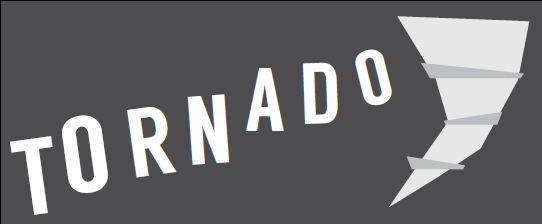Save for blizzards, Chicago isn’t known for being prone to natural disasters. But if some sort of natural disaster or freak storm descends upon the Chicago area, would you know where to go or what to do? We take a look at some different emergencies—some more realistic than others—and give you a few keys to on-campus survival. (Hint: When in doubt, take shelter in Tech.)
After the Great Chicago Fire of 1871 took out pretty much all of downtown Chicago, fire security has been a top priority. Tech has fire doors around every stairwell that shut when the fire alarm goes off. Each of these doors is rated to stand strong against a fire for over two hours, giving students and faculty plenty of time to escape. Small plaques on the appropriate doors mark the fire exits.
Of course the safest place to be in the event of a fire is outside, but if you happen to find yourself inside a building, Tech is ideal. From the fire doors to the sprinkler system, the building is well prepared to keep students safe from a blaze.
The devastating wind speeds and deafening roar of a tornado ripping through campus could be frightening, but if you’re in Tech, you’re in luck.
“[Tech] is a squat building,” civil and environmental engineering professor Charles Dowding says. “It’s not very tall. It has a floor below ground level. The walls are very thick compared to new buildings, and as long as one stays away from the glass, it’s a very well- protected building.”
Building codes account for wind loads, which translate to how strong of a wind buildings can withstand. According to Dowding, all of the buildings on our campus must be designed to withstand 105 mph winds, as per our location on the coast, but there is only a 15 percent probability that this metric will be exceeded in a 50-year period.
With wind loads come regulations on building height. Dowding says buildings in this area are most likely limited to 85 feet tall, which helps prevent tornado damage.
Earthquakes are uncommon in this part of the country, but despite the miniscule odds, the buildings must be up to code by law. In Evanston, that means they must be designed to withstand the magnitude of an earthquake that has a 1 percent chance of happening in 50 years. This quake would be caused by a slip in the New Madrid Fault, which is located in southeastern Missouri. Because of stronger building codes, new buildings would not fall down if this fault slipped, but the fates of older buildings would depend on their construction.
The worst place to be caught during an unlikely earthquake? Norris, due to the landfill soil on which it rests.
“Landfill is extremely poor soil,” says geological sciences professor Emile Okal. “It has the capacity to amplify seismic vibrations and liquefaction quite significantly.”
While rain might not appear harmful, a flood has the potential to devastate, particularly on Northwestern’s terrain.
Because all of campus is east of Ridge Avenue, water naturally flows toward Lake Michigan when it rains, Dowding says. “That’s the good news,” he explains. “The only problem is getting it to the lake without having it go through Northwestern buildings.”
According to Dowding, the two driveways on either side of Tech have been built up to prevent flooding.
“They put about four to five feet of asphalt at the northern part of Tech, and completely redid that driveway,” Dowding says.
In any campus building, stay out of basements during flood watches.



